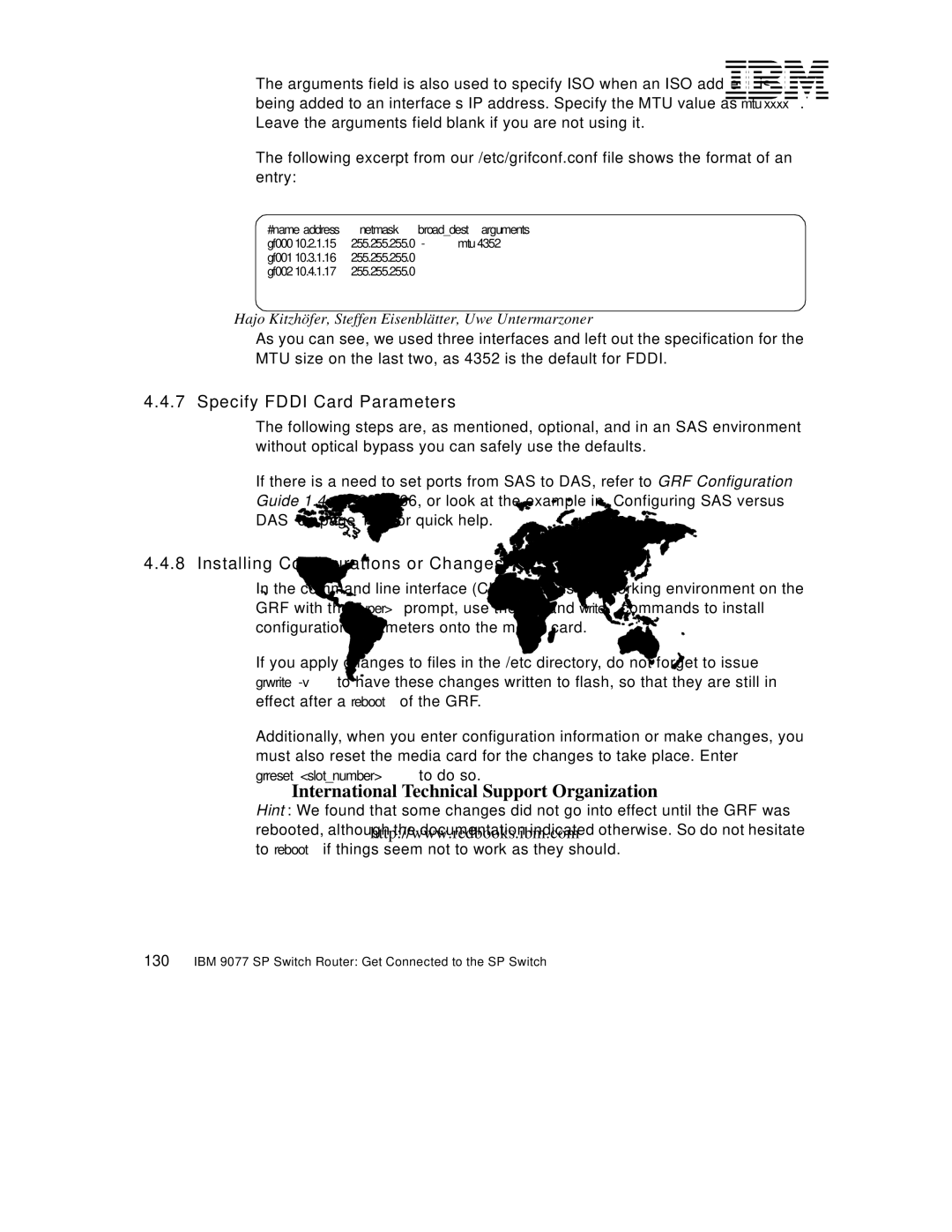
The arguments field is also used to specify ISO when an ISO address is being added to an interface’s IP address. Specify the MTU value as mtu xxxx. Leave the arguments field blank if you are not using it.
The following excerpt from our /etc/grifconf.conf file shows the format of an entry:
#name address | netmask | broad_dest | arguments |
gf000 10.2.1.15 | 255.255.255.0 | - | mtu 4352 |
gf001 10.3.1.16 | 255.255.255.0 |
|
|
gf002 10.4.1.17 | 255.255.255.0 |
|
|
As you can see, we used three interfaces and left out the specification for the MTU size on the last two, as 4352 is the default for FDDI.
4.4.7 Specify FDDI Card Parameters
The following steps are, as mentioned, optional, and in an SAS environment without optical bypass you can safely use the defaults.
If there is a need to set ports from SAS to DAS, refer to GRF Configuration Guide 1.4,
4.4.8 Installing Configurations or Changes
In the command line interface (CLI), which is the working environment on the GRF with the super> prompt, use the set and write commands to install configuration parameters onto the media card.
If you apply changes to files in the /etc directory, do not forget to issue grwrite
Additionally, when you enter configuration information or make changes, you must also reset the media card for the changes to take place. Enter grreset <slot_number> to do so.
Hint: We found that some changes did not go into effect until the GRF was rebooted, although the documentation indicated otherwise. So do not hesitate to reboot if things seem not to work as they should.
